Products: Pool, Patio & Play
Check Out These Innovations for Summertime Fun.
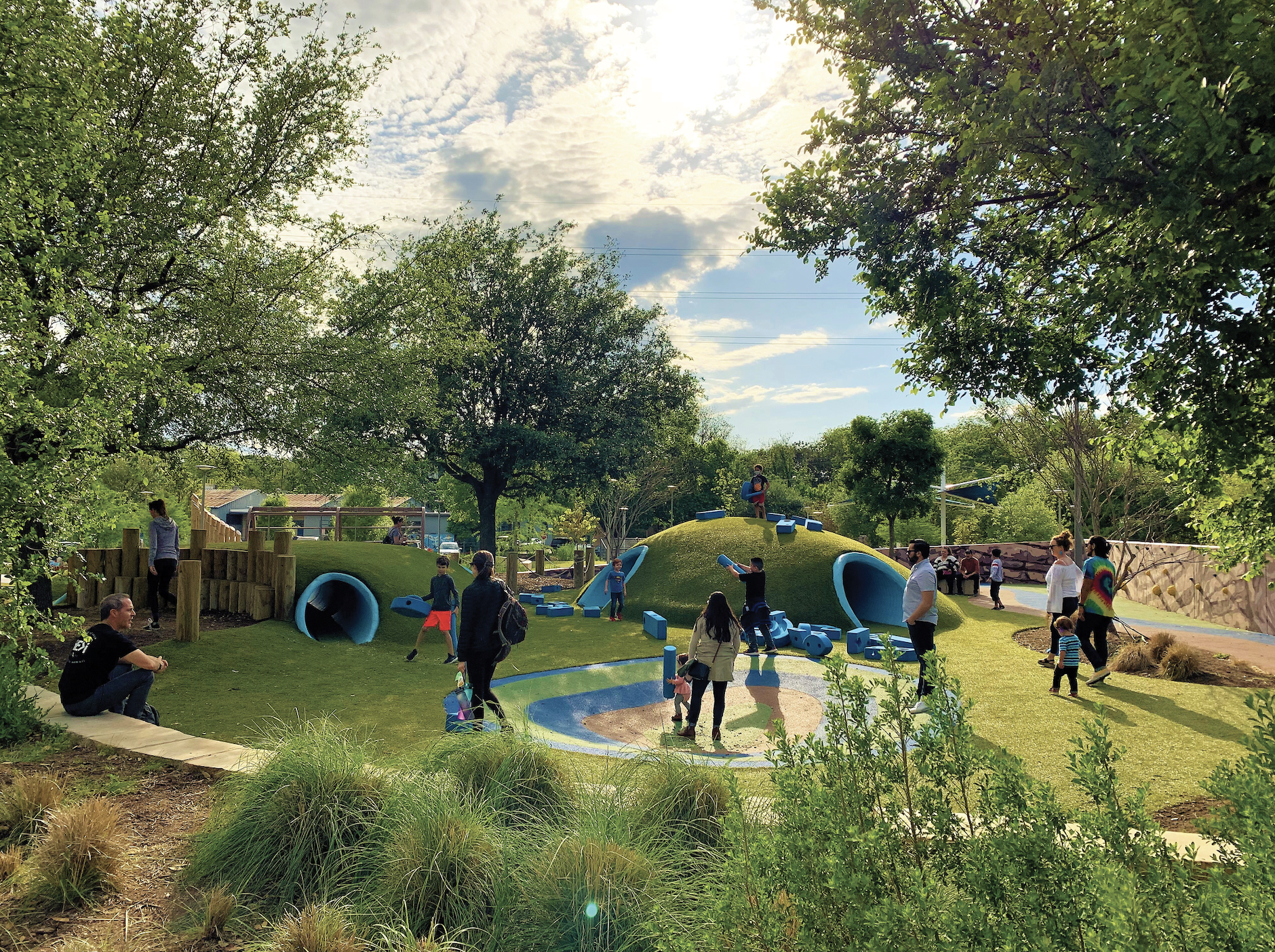 Project Details: Cost of Park: $5 Million | Build Time: 5 years | Size of Park: 2 acres
Project Details: Cost of Park: $5 Million | Build Time: 5 years | Size of Park: 2 acres
Texas Landscape Architect puts the play back in playground
Safety is found in the details.The edges of stonework, the amount of mulch laid in an area, even the surface temperature of a structure during a hot southern day. These details determine risks and create either a place of danger or a place of exploration, education, and excitement. These details are also the key factors in Adam Shriver’s job.
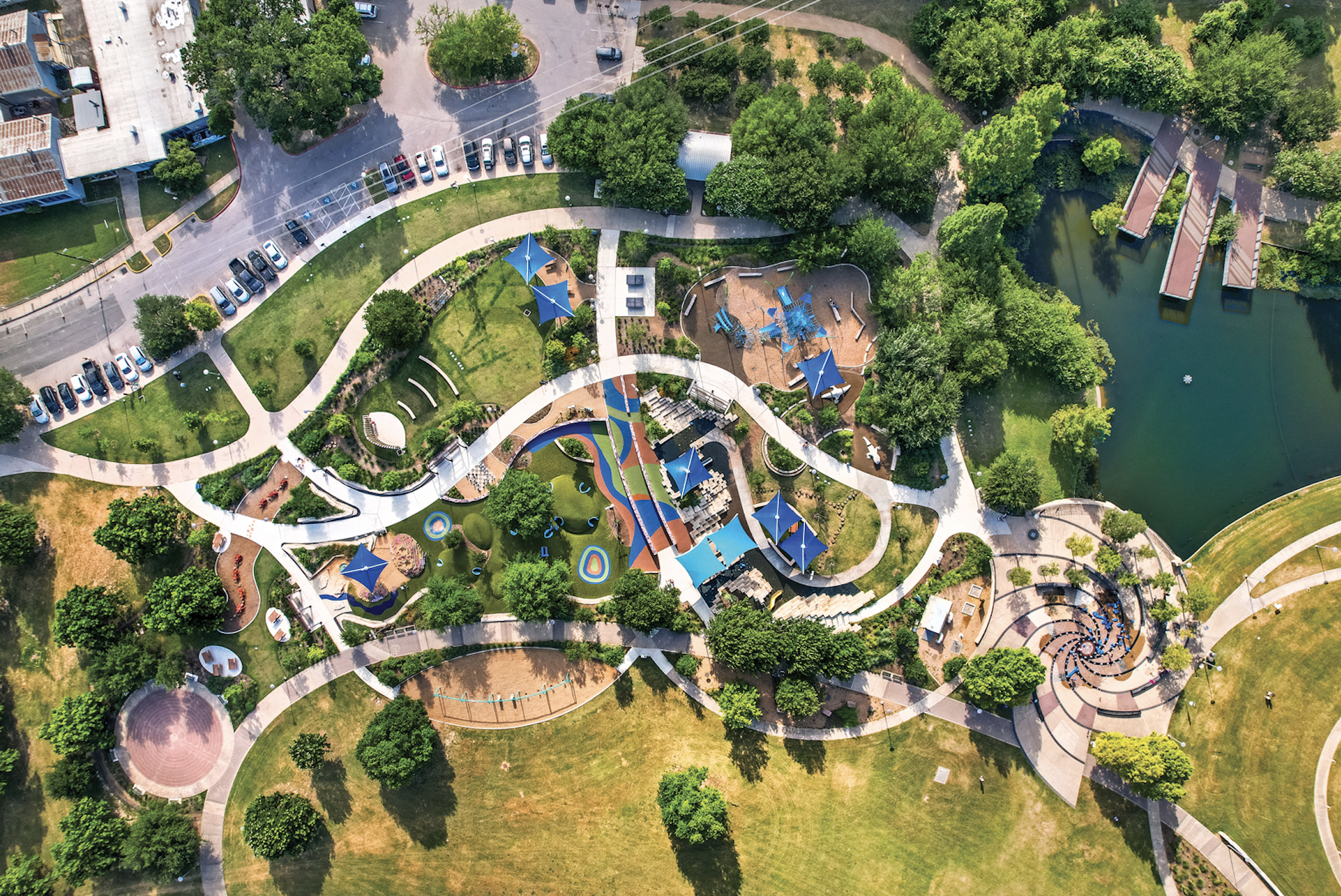 Aerial View of Park
Aerial View of Park
Adam specializes in building public outdoor spaces for families, specifically children. He is a Senior Landscape Architect with TBG Partners in Austin, Texas, and earned his Playground Safety Inspector Certification from the National Recreation and Park Association in 2017. TBG Partners is a Landscape Architecture, Urban Design and Planning firm with experience through several U.S. states, and even international locations, but works mostly on unique Texas projects. One of Adam’s first projects with the group was called the “Alliance Children’s Garden”, a two-acre site just outside of downtown Austin. The park’s development came as part of a $5M project to turn a massive parking lot into several acres of public use space. The city of Austin began budgeting for the construction in the late 1990’s, then work on the park began in 2016 and ended in summer 2021. The children’s area was the finishing touch.
Dozens of unique features are sprinkled throughout the playground. There are climbing blocks and nets, mounds with tunnels underneath, a splash pad, and even a set of musical chimes that multiple kids can use at once. Several elements were created by local artists.
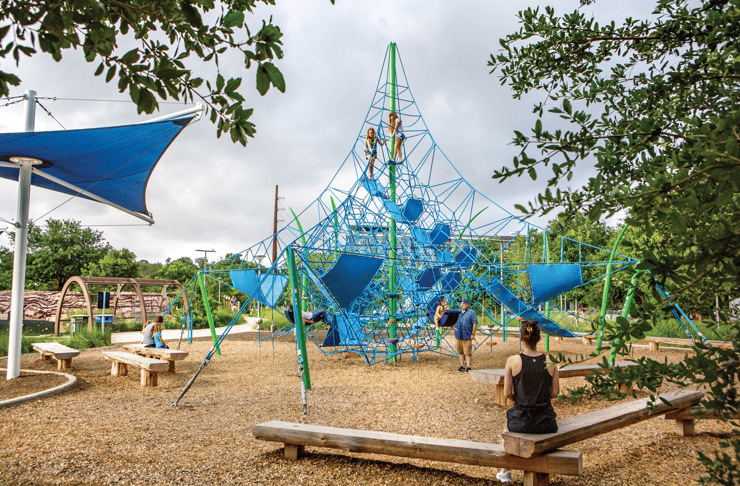
An Austin blacksmith even built the larger-than-life steel sculptures of fire ants, a tribute to the organization that initiated the park plans, Town Lake Park Alliance.
“They were called the Town Lake Park Alliance, and people say they were constantly ‘stinging’ local officials to be sure the green space came into play,” said Adam.
Adam and his team coordinated input sessions with children, ages 2 through 12-years-old, to learn what kind of park they wanted. The kids drew their dream playground or built it with blocks and paper. Then the design team brought their wishes to life, mixing in the safety codes and rules.
“The idea was to not just build a classic playground, but a garden where they can play the way they want to. They want to climb, hide, run, and explore.”
Safe playgrounds are a successful combination of design, materials selection, and maintenance, with the ultimate goal of protecting children from severe injury. Playground safety inspectors look for surfacing material condition, equipment damage and layout (splinters on wood posts for example), sharp corners and edges, fall heights, and openings that could entrap a child.
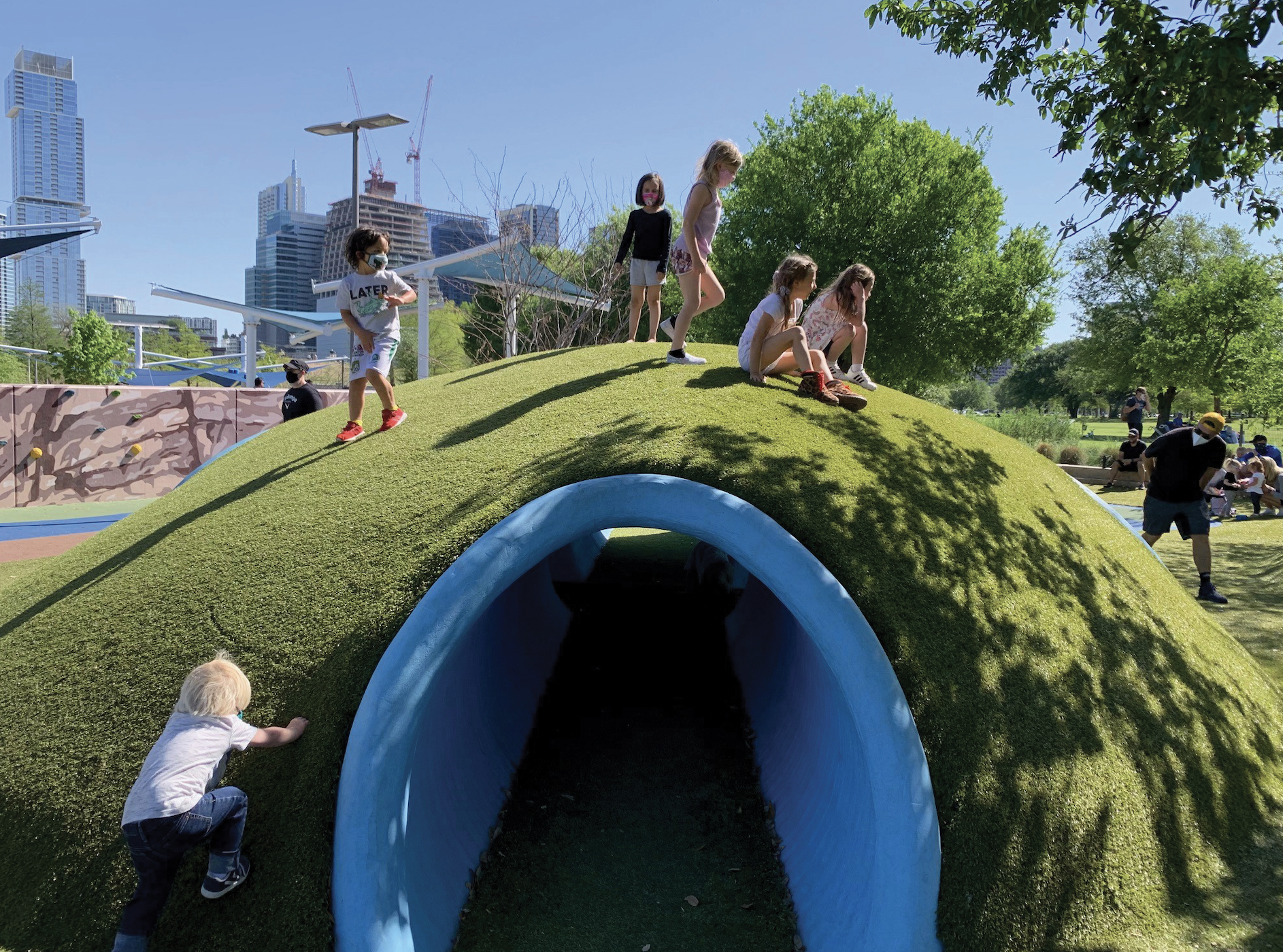
“We monitor things like safety mulch around a swing. The depth of safety mulch has a strong relationship to how much impact it can absorb from a kid falling. There could be 12 inches of mulch around the playground when it opens, but as kids run around and wind blows it away, shallow areas form that can cause serious harm. Maintenance crews must also check the condition of bolts, hinges, or hooks. If a child’s clothing gets caught on something they may not be able to get free, and this can cause serious injury too.”
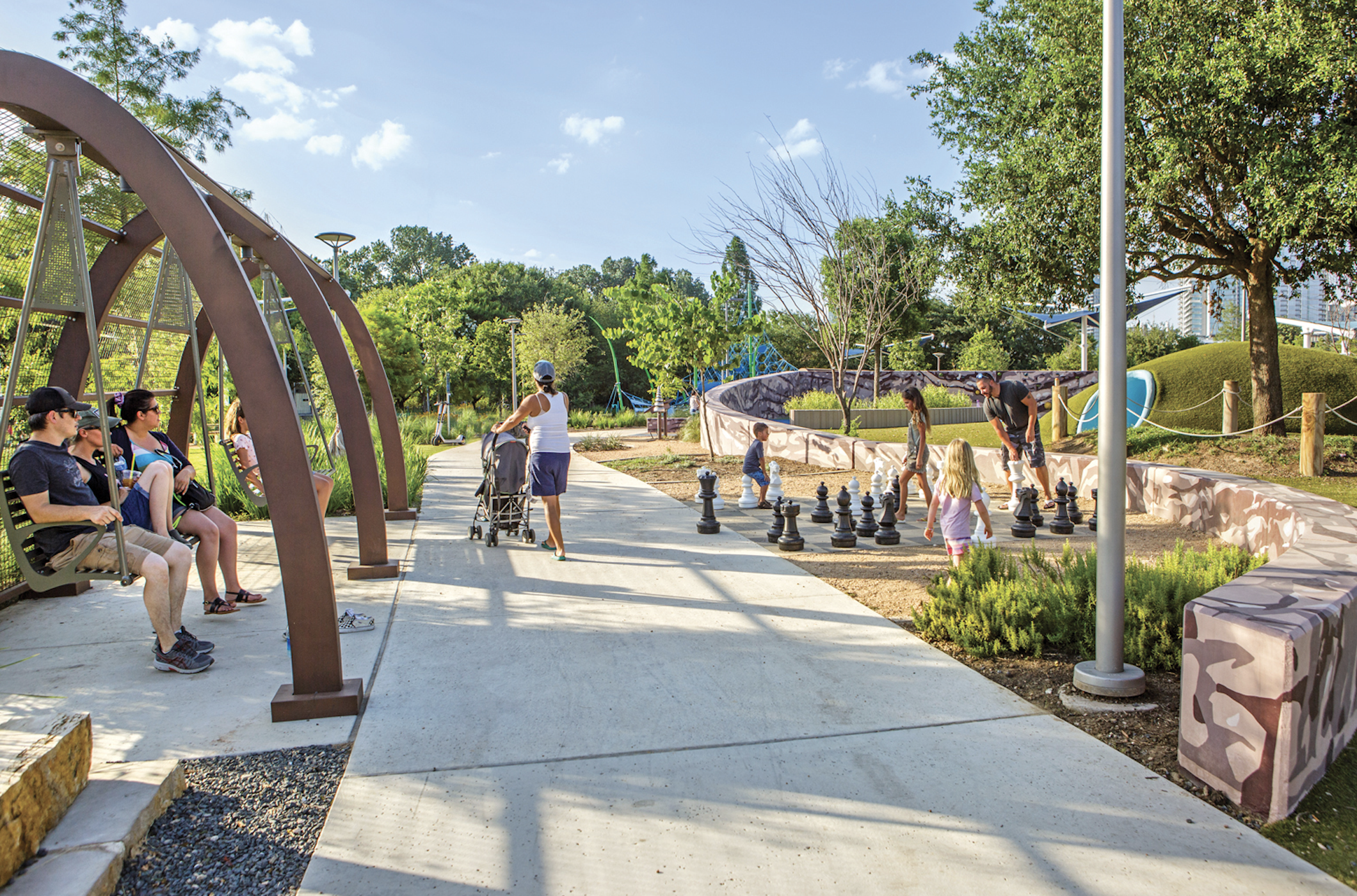
Designers also plan for climate factors, like potential risk of damage from freeze or erosion, and presence of shade. Plus, they ensure proper maintenance inspections are conducted and there are strong inspection records. Playground safety rules can change depending on the age of a child using the playground and the region where they are located. They can also change as new research surfaces, so even the safest parks often need audits and updates.
These guidelines are all outlined by the National Recreation and Parks Association, an international technical standards organization called the ASTM, and the U.S. Consumer Product Safety Commission. CPSC staff began developing playground safety standards as lead based paint was discovered in the 1970’s on most playground equipment. Adam says since then, designs of playgrounds have focused on risk aversion more than fun. He thinks the Alliance Children’s Garden is the perfect balance of the two because of the unique material used, instead of traditional equipment like swings or teeter totters. The garden creates what he calls natural, imaginative play.
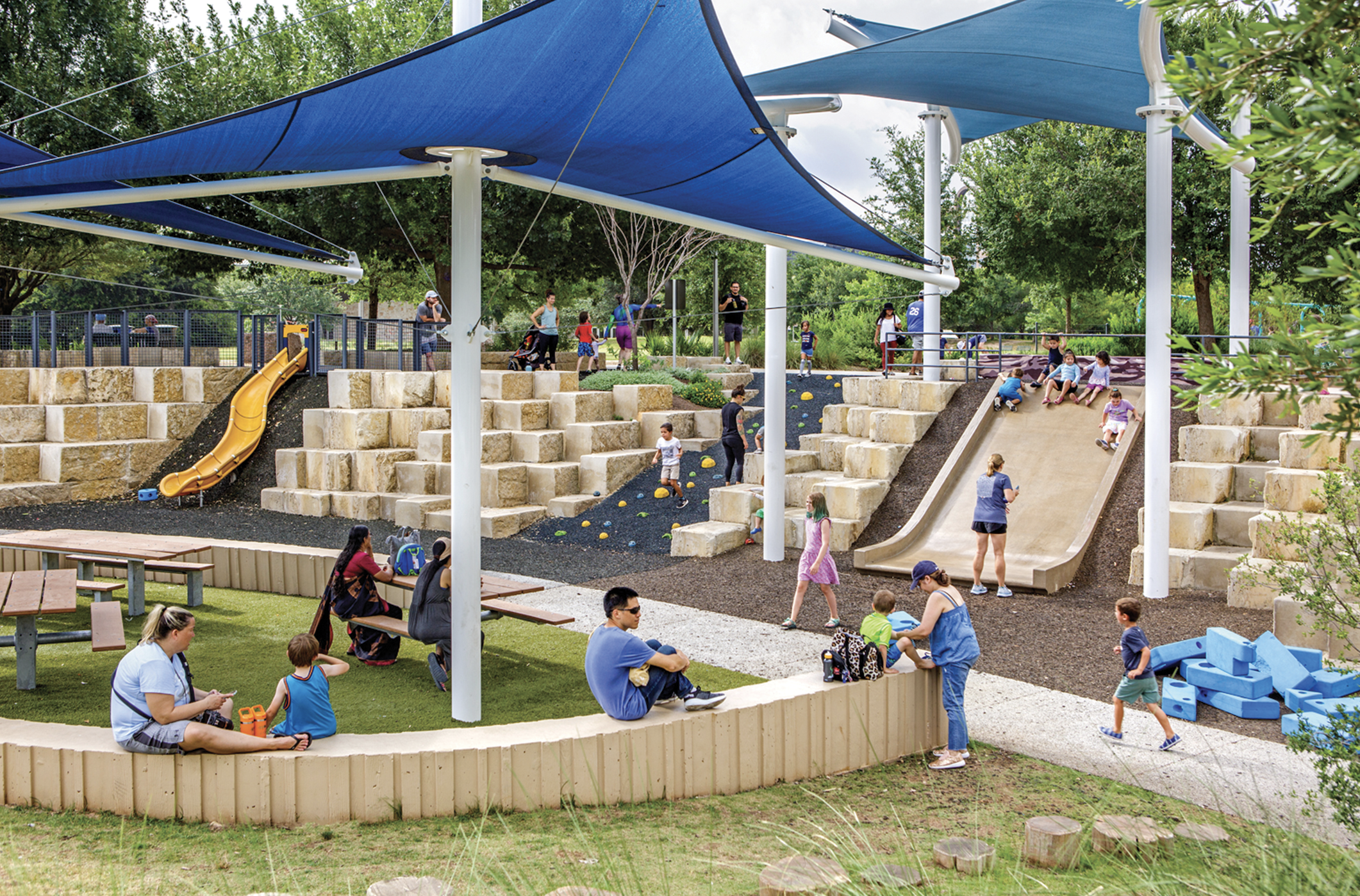
These guidelines are all outlined by the National Recreation and Parks Association, an international technical standards organization called the ASTM, and the U.S. Consumer Product Safety Commission. CPSC staff began developing playground safety standards as lead based paint was discovered in the 1970’s on most playground equipment. Adam says since then, designs of playgrounds have focused on risk aversion more than fun. He thinks the Alliance Children’s Garden is the perfect balance of the two because of the unique material used, instead of traditional equipment like swings or teeter totters. The garden creates what he calls natural, imaginative play.
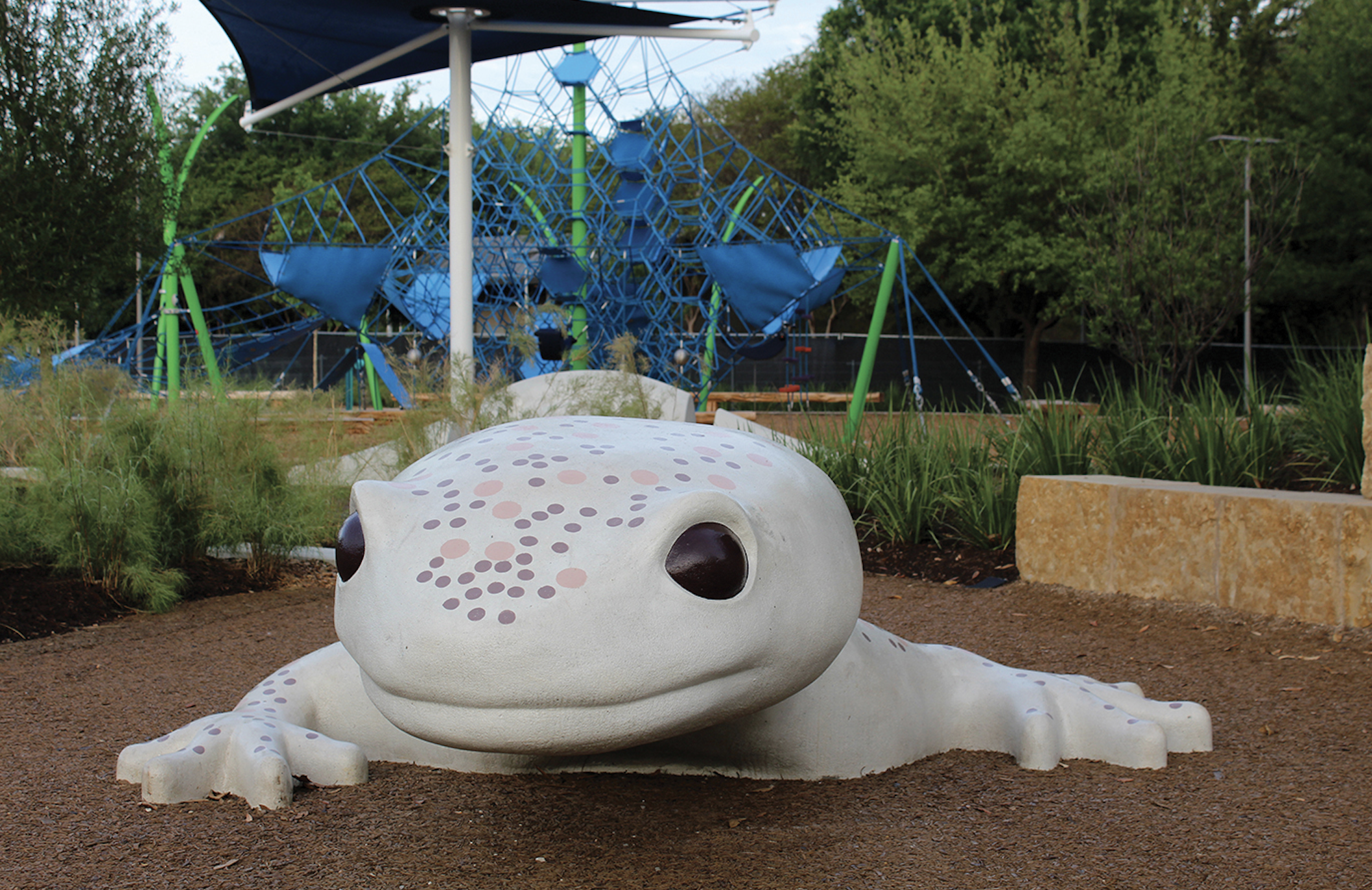 Concrete Salamander by QCP
Concrete Salamander by QCP
“There are challenges and obstacles they can overcome. The only risks involved are ones they choose to take. Things they are comfortable with. Researchers say this helps their mental development and intellect and makes them more confident in their physical abilities.”
The Alliance Children’s Garden is one of several creative projects that embody Adam’s goal to blend creative ideas with strict safety codes. He encourages other landscape architects to adopt this goal, to protect the clients who enjoy their work. The key is to keep the codes in mind during a project’s early stages, not after completion.
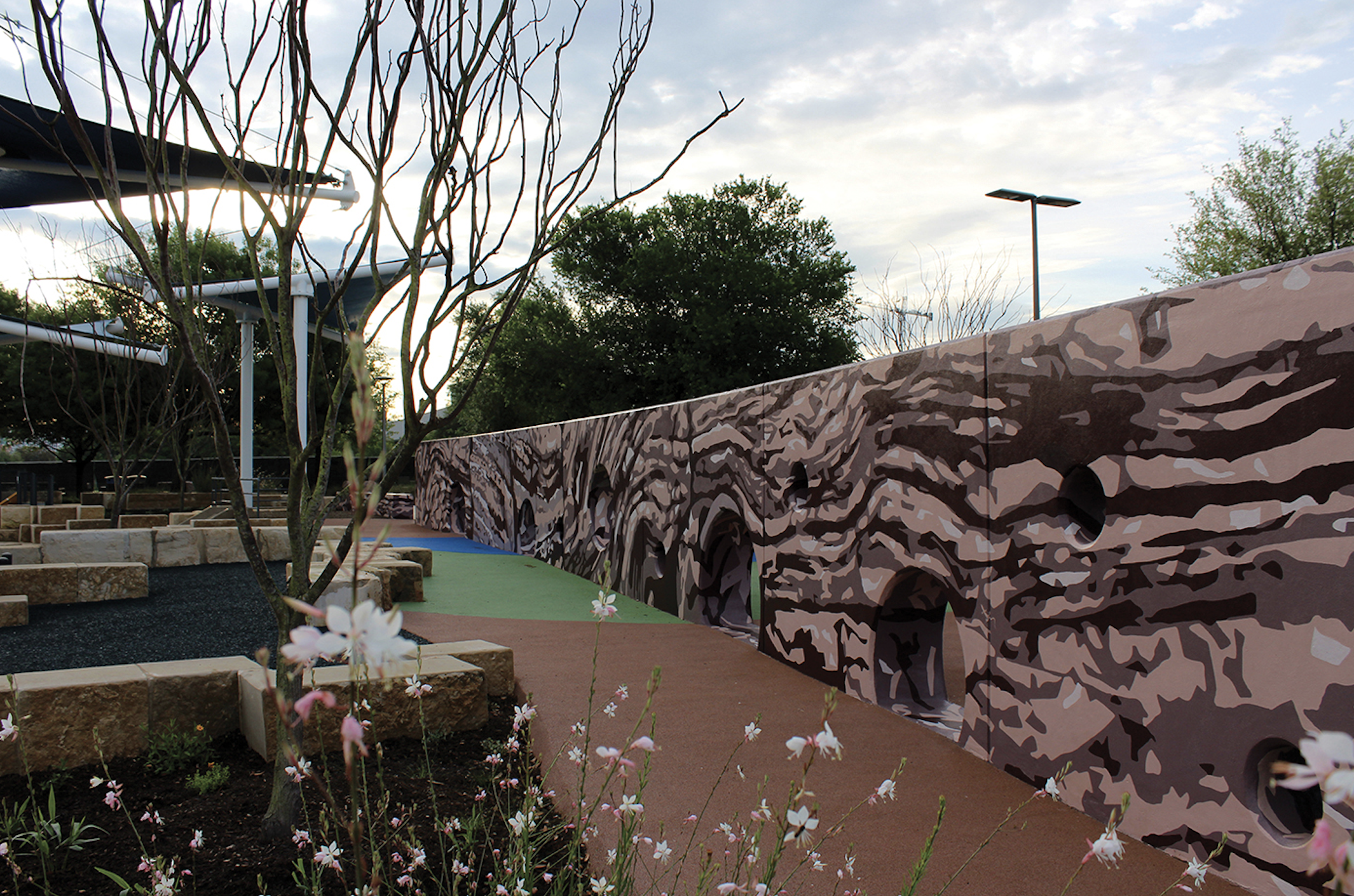 Climbable Wall Mural
Climbable Wall Mural
“Designers tend to rely heavily on the equipment and material manufacturers to handle the safety aspects, without learning about those materials or their maintenance. Learning about playground safety makes me a better designer overall. Often, I hybridize equipment that will be safe before the park is built and once it’s handed over to the owner, city, or whoever is responsible for the periodic oversight, inspection, and maintenance. I can think about those things up front, then have a more intelligent conversation with people in maintenance and operations, or those supplying the playground equipment.
"Working together makes it all much more rewarding."
We are over 100 visionary minds, reshaping raw space into livable places across the country and abroad. A critical combination of 30 year industry veterans paired with dynamic, young talent, collectively composing, calculating, and anticipating the tendencies of living systems. From four offices, our disciplined designers and their strategic partners together refine earth into art, allowing complex sites to evolve. One firm, many voices, together altering land to become meaningful landscape architecture.
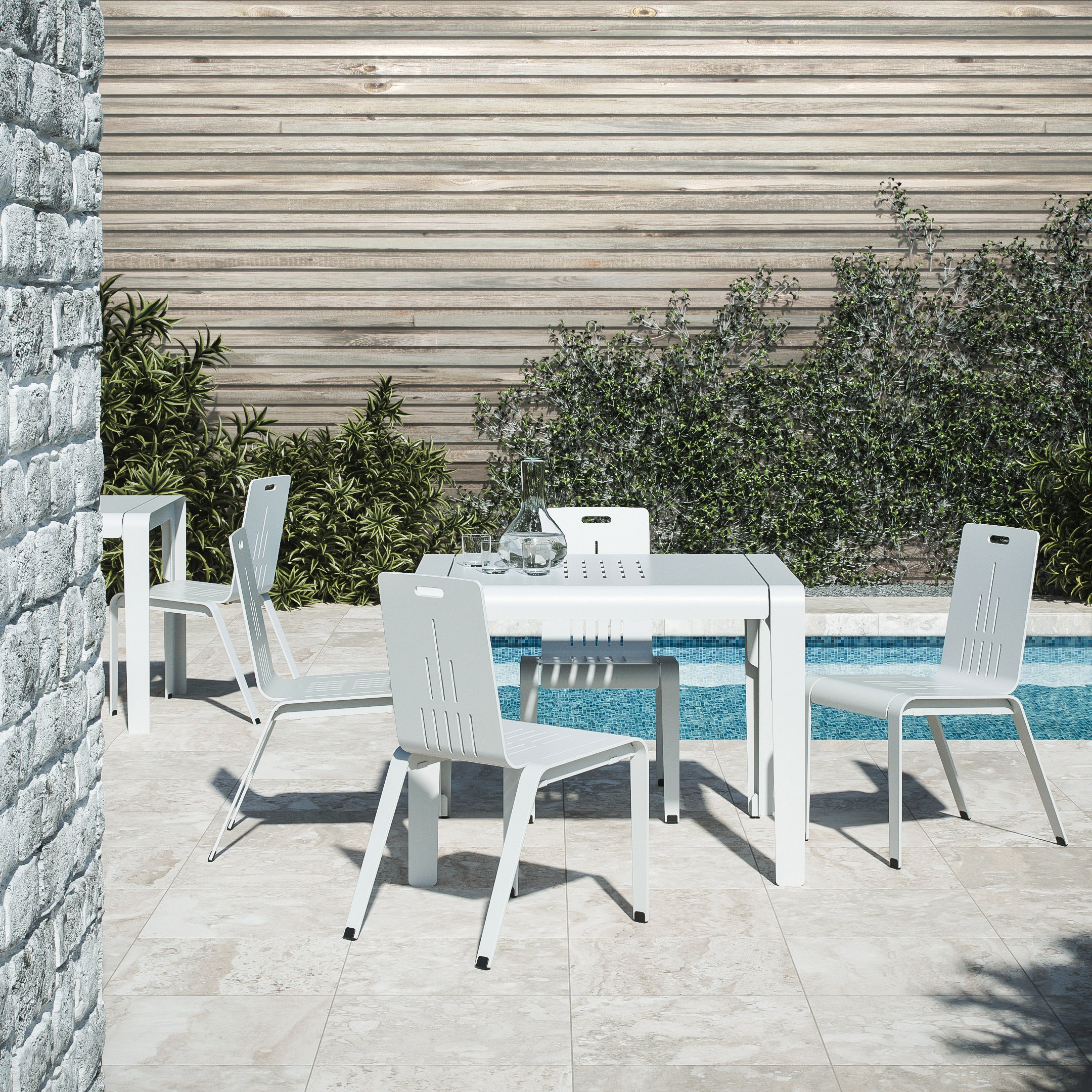
Check Out These Innovations for Summertime Fun.
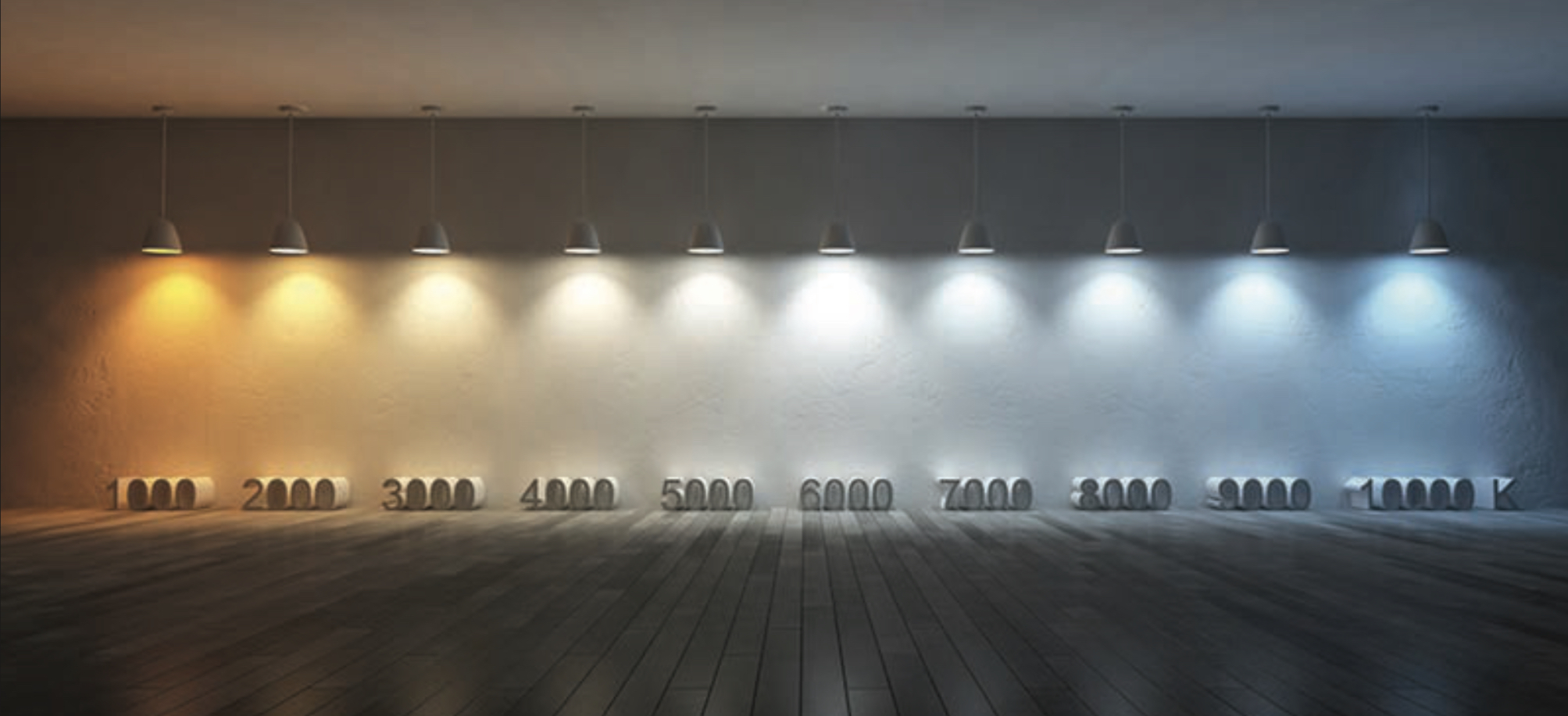
How Lighting & Color Temperature Can Play A Role in a Setting